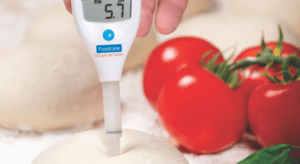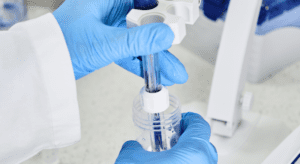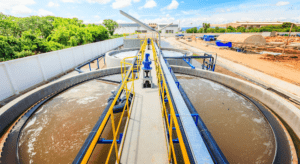When it comes to pH measurement, precision is crucial. pH meters are indispensable tools in numerous fields, enabling accurate acidity and alkalinity assessments. To ensure reliable and consistent pH readings, regular calibration of pH meters is important because of how the electrode changes over time.
The importance of calibration
Calibration serves as a fundamental aspect of pH meter maintenance. Over time, pH meters can experience drift due to factors such as electrode aging, temperature fluctuations, or exposure to chemicals. Calibration enables adjustments to be made, aligning the pH meter’s readings with known reference standards. This process ensures accurate and dependable pH measurements, instilling confidence in the results obtained.
The Calibration process
Preparing the pH electrode
First remove the protective cover from the electrode bulb and rinse the bulb in de-ionised (DI) water to remove any salt crystals. After rinsing, remove any excess DI water by shaking down the electrode (do not wipe the sensing tip!). Refill your electrolyte if needed. You’re now ready to calibrate. Note: the formation of salt crystals on your pH electrode is normal. It happens when the storage solution evaporates during shipment or over a long period of unuse.
Preparing the calibration solutions
Choose two or more calibration solutions with known pH values. These solutions should cover the pH range relevant to the samples being tested. As an example, you could use pH buffers 1.00 and 4.01 for a two-point calibration to measure the pH of lemon juice (which has a pH around 2).
Remember to always use fresh solutions and replace them if they become contaminated.
Maintaining pH Calibration Solutions
Never submerge your electrode right into the calibration solution bottle. Pour out just what is needed into a container that has been rinsed with DI water and use that for your calibration. Discard used calibration solutions.
Hanna calibration buffers are designed to have a long shelf life when left unopened. Once opened, a buffer with a pH lower than 7 will last around 4-8 weeks, while a buffer with a pH over 7 will be good for about 1-2 weeks.
For even better accuracy, you can perform a third calibration at pH 7.01. Calibrating at pH 7.01 can determine problems such as a contaminated or broken probe and helps avoid any errors in measurement.
It’s best to calibrate daily for high accuracy. However, calibrating once or twice a week is fine too if you don’t require highly accurate measurements. If you decide to do the latter, we recommend using the single-use sachets, instead of the bottle. Shelf-life is limited after bottles are opened, whilst the sachets can last longer.
Performing pH meter calibration
Start by rinsing the electrode in DI water and stir the electrode gently for 4-6 seconds.
Then place the electrode in your first calibration solution, carefully submerged the sensing tip and junction and stir gently. If you use magnetic stirrer, ensure that vortex is not forming.
Wait for the reading to stabilize for at least 3 seconds and confirm the calibration. Repeat this process as needed for your other calibration solutions.
Now you’re ready to take your measurements and be confident in their accuracy.
Optional: Check your Good Laboratory Practice (GLP) Data
Many Hanna meters have a GLP data screen that allows you to verify that the electrode’s calibration data is acceptable for use in measurement. This data includes the slope and offset of the electrode (the Nernst equation)
The slope should be between 85-105% (51-62 mV/pH unit) and the offset should be between ±30mV. If your electrode is outside of this range, try cleaning, reconditioning and calibrating with fresh buffer. If the problem persists, you may need to replace your electrode.
Using storage solutions
If your electrode is dry, rehydrate the sensing tip by soaking the bulb and junction in an electrode storage solution for at least one hour or more. Storing your electrode in storage solution also improves its life span and performance.
Storing your pH electrode in storage solution rather than water is important for reducing microbial growth, preventing the reference electrolyte from leaching out, and keeping the junction clear. If you’re out of storage solution, pH 4 or 7 buffers can be used in a pinch.
Cleaning and storing your pH electrode
Soak the electrode in a general cleaning solution, or an appropriate use-specific cleaning solution, for at least 15 minutes before calibration to dissolve contamination. Never store pH electrodes in distilled or deionized water. Doing so will shorten the life of the sensor.
When possible, we strongly suggest using a cleaning solution specially designed for what you are testing. Each dedicated cleaning solution is made to effectively remove the specific types of stains and deposits from your sample. (For example, the cleaning solution for soil tester will remove the dirt and organic matters that can get stuck on the electrodes.)
After cleaning, rinse the pH electrode thoroughly with distilled or DI water, and then soak the electrode in storage solution for at least 2-3 hours before calibration. We recommend soaking the electrode overnight for best results.
Get your complete set of solutions from Hanna Instruments Australia. (What’s included: pH 4.01, 7.01 and 10.01 technical calibration solutions, storage solution and cleaning solution).




